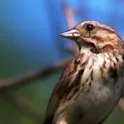
Featured news
18 Sep 2023
Captive pandas could be ‘jet lagged’ if their body clocks don’t match their environment
by Angharad Brewer Gillham, Frontiers science writer Image/Shutterstock Animals’ circadian clocks normally get cues from their environments: light cycles, seasonal food availability, and temperature. If these cues are very different to the ones from the latitudes which they have adapted to, it could disrupt their bodies and behavior, like jet lag in humans. Scientists studying the effect of this possible ‘jet lag’ on giant pandas, which are a vulnerable species and live in zoos worldwide, have shown that pandas housed in different latitudes to their normal range in China are less active, with potentially negative consequences for their welfare. All animals have an internal clock called a circadian clock, which is regulated by cues from their environment — but animals in zoos can be exposed to very different cues from animals in the wild. Since all animals’ circadian clocks are linked to their behavior and physiology, this could be significant to their welfare, which is crucial to maintaining captive populations of animals at high risk of extinction in the wild, like giant pandas. Scientists set out to understand how the ‘jet lag’ of living in latitudes they did not evolve in, and therefore getting cues for their circadian clocks which […]













